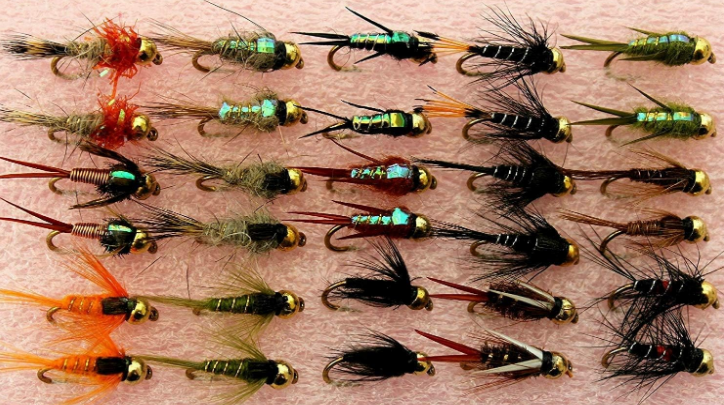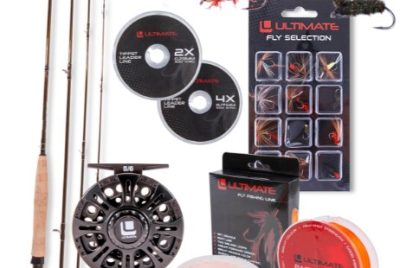Fly Fishing Flies for Trout
Introduction
As an avid fly fishing enthusiast, I’ve discovered that the key to a successful trout fishing expedition lies in the careful selection of fly patterns. Join me on a journey through the diverse world of fly fishing flies for trout, where every cast brings the promise of an exciting catch.
Understanding Trout Behavior
Habitat and Feeding Patterns

Trout behavior is intrinsically linked to their habitat and feeding habits. Understanding the intricacies of where trout dwell and what they consume is crucial for selecting the right fly pattern. In this section, we’ll delve into the fascinating world of trout behavior and how it impacts our fly choices.
Types of Fly Fishing Flies
Dry Flies
The elegance of dry fly fishing lies in the anticipation of a trout rising to the surface. Dry flies mimic adult insects resting on the water, making them a thrilling choice for anglers. We’ll explore the characteristics and scenarios where dry flies truly shine, creating unforgettable moments on the water.
Nymphs
When trout are feeding beneath the surface, nymphs become the go-to choice for fly anglers. These sub-surface imitations of aquatic insects are incredibly effective. Join me in discovering the world of nymph fishing, from understanding the underwater world to mastering the art of presenting these lifelike patterns.
Streamers
For those seeking a more aggressive approach, streamers imitate baitfish and trigger predatory instincts in trout. The excitement of a trout aggressively striking a streamer is unparalleled. Explore the versatility of streamers, learn retrieval techniques, and witness the thrill of engaging trout with these dynamic fly patterns.
Wet Flies

Wet flies, designed to imitate emerging insects beneath the water’s surface, are a staple in any angler’s arsenal. In this section, we’ll explore the underwater movement of wet flies, their applications in different scenarios, and how they attract trout in varying conditions.
Matching the Hatch
Importance of Observing Insect Activity
To truly connect with trout, it’s essential to observe and understand the insect activity in the area. Matching the hatch involves identifying prevalent insect species and selecting fly patterns that mimic them. Join me in honing your observational skills and discovering the joy of presenting the perfect match to hungry trout.
Fly Selection Based on Season
Trout behavior varies with the seasons, and so does the insect activity. In this section, we’ll discuss the seasonal variations in insect hatching and how it influences fly selection. Learn to adapt your approach based on the time of year, ensuring your fly patterns resonate with the prevalent insects during each season.
Essential Patterns for Trout Fishing
Adams

The classic Adams fly has stood the test of time for a reason. Its versatility and effectiveness make it a must-have in any fly angler’s box. Join me in exploring the charm of the Adams fly, understanding when and where it excels, and how it consistently entices trout in diverse fishing situations.
Pheasant Tail Nymph
Among nymph patterns, the Pheasant Tail Nymph is a proven success. Its realistic appearance and subtle movements make it irresistible to trout. Dive into the world of nymph fishing as we discuss the Pheasant Tail Nymph, offering tips on presentation and maximizing your success with this pattern.
Woolly Bugger
The Woolly Bugger is a streamer that deserves a special place in your fly box. Its versatility and ability to mimic various prey items make it a go-to choice for many anglers. Join me in exploring the Woolly Bugger, discussing its effectiveness, and mastering the art of retrieving this dynamic streamer for optimal results.
Elk Hair Caddis
The Elk Hair Caddis is a buoyant and attractive dry fly that consistently fools trout. In this section, we’ll delve into the features that make the Elk Hair Caddis a favorite among anglers. Discover the situations where this fly excels and learn the best practices for using it effectively.
Color and Size Considerations
Importance of Color in Fly Selection

The color of your fly can significantly influence trout behavior. In this section, we’ll explore how color choices impact visibility and success. Gain insights into choosing the right colors based on water conditions, light, and the mood of the trout you’re targeting.
Size Matters
Matching the size of your fly to natural insects is a critical aspect of successful fly fishing. Join me in understanding why size matters, explore guidelines for selecting the appropriate size, and learn how to adapt your approach based on the specific conditions you encounter on the water.
Presentation Techniques
Drift Fishing
The art of drift fishing involves presenting your fly naturally by allowing it to drift with the current. In this section, we’ll discuss the nuances of drift fishing, including adjusting drift speed and patterns for different scenarios. Mastering this technique enhances your chances of fooling even the most selective trout.
Stripping and Retrieving
For those using streamers, stripping and retrieving techniques add an element of action that can trigger aggressive strikes. Join me in exploring effective techniques for stripping and retrieving streamers, mimicking injured baitfish and enticing trout to strike with ferocity.
Fly Fishing Gear Recommendations
Fly Rod and Reel Combos

Selecting the right fly rod and reel combo is crucial for an enjoyable trout fishing experience. In this section, I’ll recommend suitable combinations for various trout fishing scenarios. Explore the factors to consider when choosing the right gear to match your preferred style of fly fishing.
Fly Lines and Leaders
Matching your fly line and leader to the chosen flies is essential for successful presentations. In this section, we’ll highlight the importance of proper fly lines and leaders, offering tips on selecting the right type for different situations. Understand how the right combination can enhance your overall fly fishing performance.
Fly Tying Basics
DIY Fly Tying
There’s a unique satisfaction in catching trout on flies you’ve tied yourself. Join me in exploring the basics of DIY fly tying, from essential materials to beginner-friendly patterns. Discover the joy of creating your own custom flies and the added confidence they bring to your fly fishing adventures.
Online Resources and Communities
For those looking to advance their fly tying skills, online resources and communities offer a wealth of knowledge. In this section, I’ll recommend platforms where you can learn advanced techniques, connect with experienced fly tiers, and share your own creations with a supportive community.
Environmental Considerations
Catch-and-Release Practices

Responsible angling plays a crucial role in trout conservation. In this section, we’ll discuss the importance of catch-and-release practices and how ethical fishing contributes to sustainable trout populations. Join me in adopting practices that ensure future generations can also enjoy the thrill of trout fishing.
Leave No Trace
Preserving the natural beauty of fishing environments is a shared responsibility. In this section, we’ll explore the concept of leaving no trace and minimizing the impact of fly fishing on natural habitats. Discover practical tips for reducing your environmental footprint while enjoying the serenity of trout fishing.
Personal Experiences and Success Stories
Memorable Trout Encounters
In this personal reflection, I’ll share some of my most memorable trout encounters. Join me in reliving the excitement of successful fishing trips, the challenges overcome, and the deep connection forged with nature through the pursuit of trout on the fly.
Overcoming Challenges
Fly fishing for trout is not without its challenges. In this section, I’ll discuss some of the common hurdles faced by anglers and share strategies for overcoming them. Discover the resilience required to master the art of fly fishing and the profound satisfaction that comes with each triumph.
Conclusion

Fly fishing for trout is a dynamic and rewarding pursuit that goes beyond the technical aspects of fly patterns and presentations. It’s a journey of connection with nature, the thrill of the chase, and the satisfaction of a successful catch. As you embark on your own adventures, may this guide serve as a companion, offering insights and inspiration for every cast.
FAQs
1.: What is the significance of matching the hatch in fly fishing?
Matching the hatch involves selecting a fly pattern that mimics the prevalent insects in the area, increasing the chances of enticing trout.
2.: How does the Woolly Bugger differ from other streamer patterns?
The Woolly Bugger’s versatility lies in its ability to imitate various prey items, making it an effective choice for enticing trout in different conditions.
3.: Why is drift fishing considered an essential technique in fly fishing?
Drift fishing allows the fly to move naturally with the current, presenting a realistic and enticing presentation to trout, increasing the chances of a successful catch.
4.: Can beginners try their hand at DIY fly tying?
Absolutely! DIY fly tying is a rewarding and accessible activity for beginners, offering a sense of accomplishment and personalization to your fly fishing experience.
5: How can anglers contribute to trout conservation through catch-and-release practices?
Adopting proper catch-and-release techniques, handling trout with care, and following ethical fishing practices contribute to the conservation of trout populations



